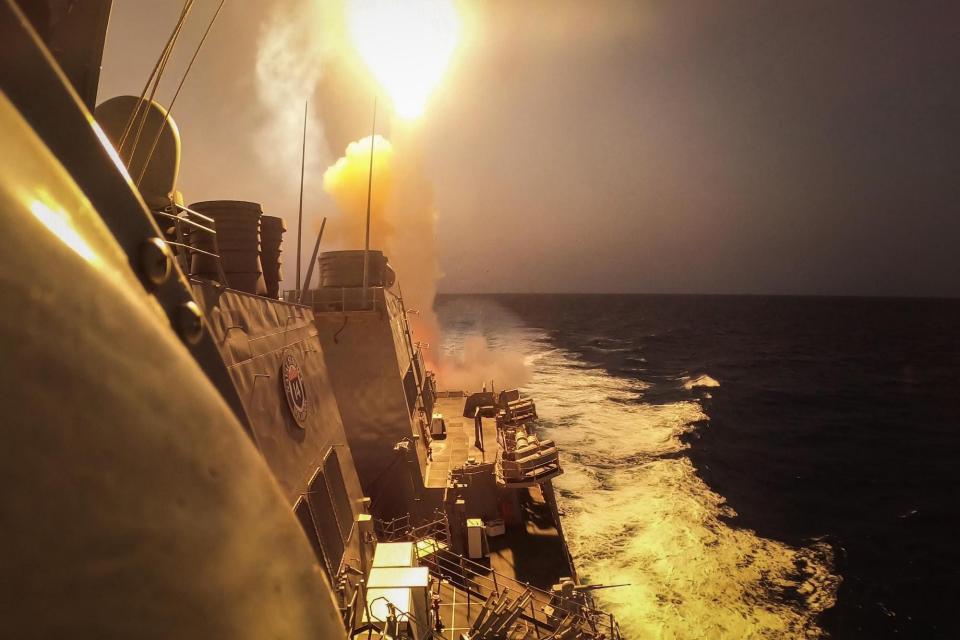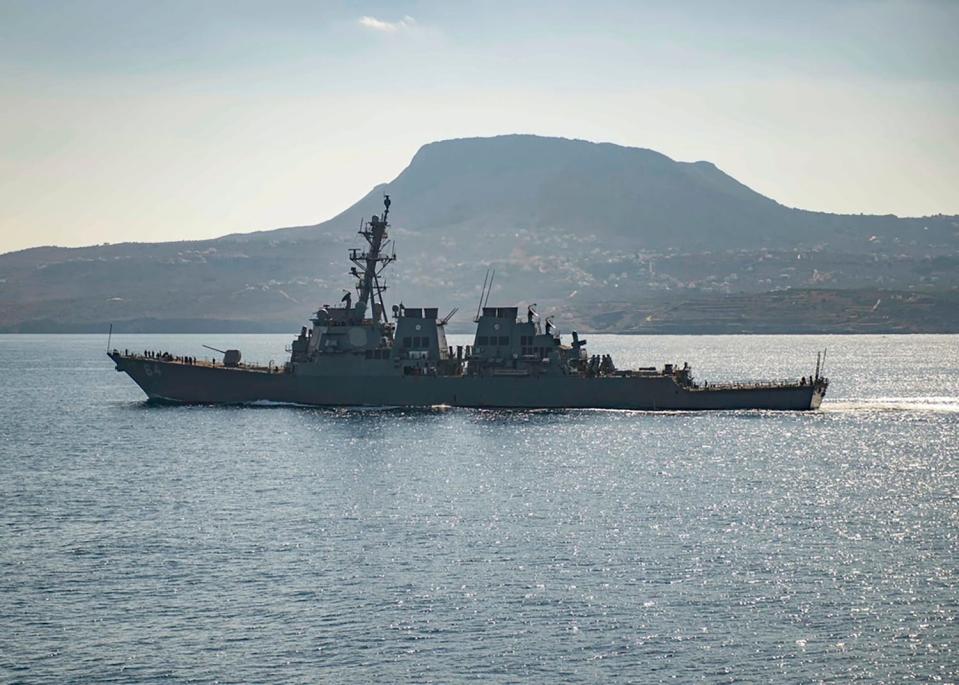-
US Navy warships in the Middle East have been facing off against anti-ship ballistic missiles.
-
The Houthis introduced these missiles into combat for the first time in late 2023.
-
The captain of an American destroyer said they are “way faster” than anything else.
US Navy warships operating in the Red Sea have been intercepting deadly ballistic missiles that are “way faster” than anything else, according to the commanding officer of an American destroyer that has shot them down.
Anti-ship ballistic missiles are a dangerous weapon that no military had ever faced in combat until recently when the Houthis started firing them into key Middle Eastern waterways late last year as part of their ongoing attacks on international shipping lanes.
Since then, the Iran-backed rebels have fired dozens of anti-ship ballistic missiles into the Red Sea and Gulf of Aden. US warships in the region have intercepted these missiles on numerous occasions, though some of the weapons have struck commercial vessels. Civilians were killed during an attack in March.
An anti-ship ballistic missile “is just way faster than anything else, Cmdr. Jeremy Robertson, captain of the guided-missile destroyer USS Carney, told reporters during a media event on Monday. He said that while the missiles are a challenge, “we have certain capabilities to be able to detect stuff like that.”
The Carney was the first US warship in the region to intercept Houthi threats in the fight that began in October 2023. The destroyer was involved in dozens of engagements during its monthslong deployment — destroying anti-ship ballistic missiles, land-attack cruise missiles, and drones — and it also carried out multiple strikes against the rebels inside Yemen.
The Houthis maintain a sizable arsenal of anti-ship ballistic missiles, according to an analysis by the the International Institute for Strategic Studies think tank.
Some of the missiles are Iranian in origin, while others just contain parts from Tehran. US Central Command has not identified specific missiles that have been used in any of the Houthi attacks, but ballistic missiles, generally, fly at faster speeds than cruise missiles.
The anti-ship ballistic missile “threat is very challenging — it’s very dynamic, and it’s very fast,” Robertson said. “These are certainly very dangerous areas, and every interaction is completely different from one another.”
Robertson said that his sailors work very quickly to engage these missiles because they must. From start to finish, the complex process of detecting a threat, making sure it’s real, sorting the trajectory, and engaging, may last “anywhere from nine to 20 seconds,” he said.

The Carney was ready for the threat though. “Our systems are doing exactly what we’ve designed them to do,” Robertson said. “We have training pipelines that build on this threat as well, and so we certainly do a lot of training to make sure the team is ready to handle that threat.”
During a visit to the Red Sea earlier this year, Business Insider spoke with Navy officers aboard USS Dwight D. Eisenhower, an aircraft carrier, and USS Gravely, a destroyer, about the Houthi anti-ship ballistic missile threat.
They similarly praised the combat systems on their warships for working as intended and said their sailors are properly leaning and training to defeat the threats.
Anti-ship ballistic missiles emerged as a growing concern for the US military long before the conflict with the Houthi conflict began, as Washington looks across the Pacific at China and its growing arsenal of formidable, long-range missiles.
A potential clash between the US and China would unfold across the maritime domain, making anti-ship capabilities a crucial factor.
Experts, including former Navy officers, previously told BI that the Houthi anti-ship missile capabilities don’t quite stack up against what China has in its arsenal. Still, the ongoing engagements in the Middle East are providing the Navy with valuable, first-ever combat experience — and information — to deal with these dangerous missiles.

The Carney has also taken on other missile threats beyond those launched by the Houthis during its lengthy deployment.
Last month, after the destroyer moved out of the Middle East and into the eastern Mediterranean Sea, it used its SM-3 interceptors for the first time to shoot down an Iranian medium-range ballistic missile amid Tehran’s unprecedented aerial attack against Israel.
The Carney finally returned home to Mayport, Florida on Sunday to wrap up a deployment that lasted more than seven months.
“I could not be more proud of what the Carney team has done since September,” Chief of Naval Operations Adm. Lisa Franchetti said aboard the warship earlier this month, welcoming the crew back to the US.
“Called to action on the very first day that you entered the US 5th Fleet, you conducted 51 engagements in six months,” Franchetti said. “The last time our Navy directly engaged the enemy to the degree that you have was way back in World War II.”
Read the original article on Business Insider
Signup bonus from





